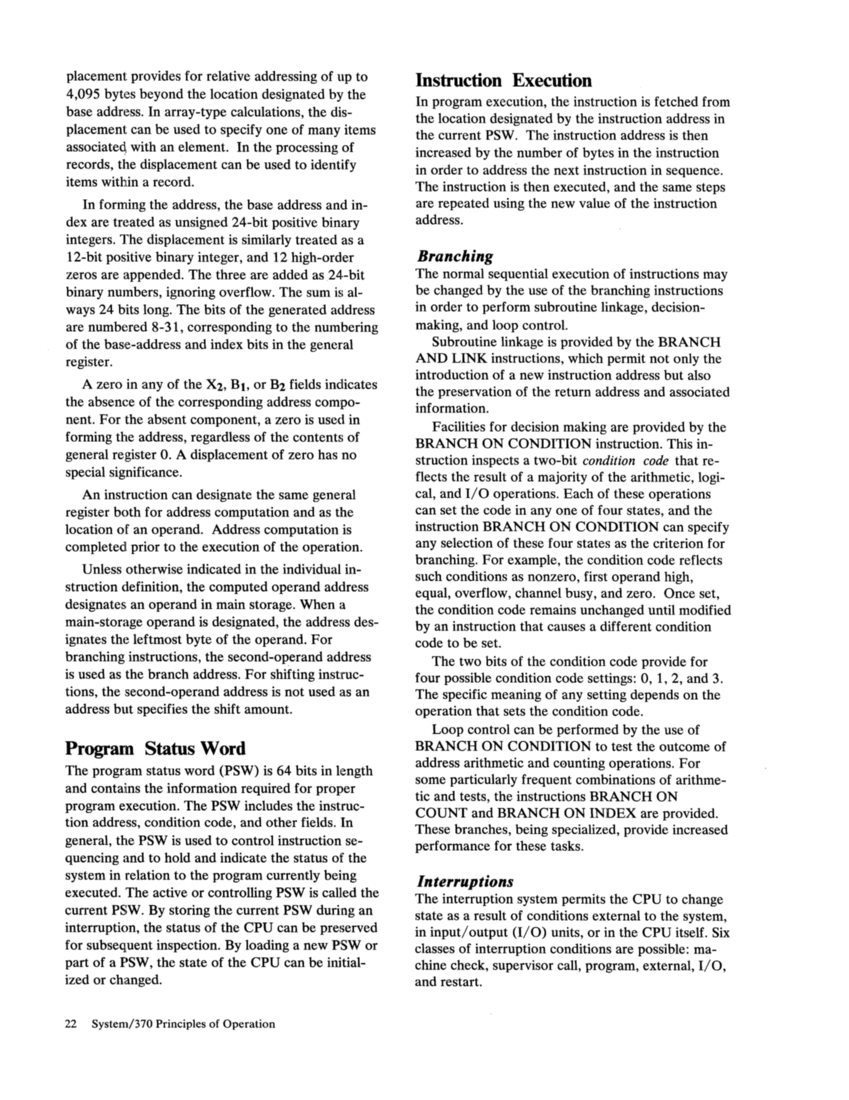Register Register
R1 R2
8 12
Third Halfword
X
2 B2
12 16
X Format
the second operand is extended with high-order ze
ros up to the length of the first operand. Such exten
sion does not modify the second operand in storage.
In the SS format with a single, eight-bit length
field, L specifies the number of additional operand
bytes to the right of the byte designated by the first
operand address. Therefore, the
the first operand is 1-256, corresponding to a length
code in L
operartd and are never
fied by the address and length. In this format, the
second operand has the same length as the
and, except for the following instructions: EDIT,
EDIT AND MARK, TRANSLATE, and TRANS
LATE AND TEST.
Address Generation
The address used to refer to main storage either is
contained in a register designated by the R field in
the instruction or is calculated from the following
47
three binary numbers:
Base Address is a 24-bit number contained in a
general register specifed by the program in a four-bit
field, called the B field, in the instruction. Base ad
dresses can be used as a means of independently
addressing each prografu and data area. In array
type calculations, it carl specify the location of an
array, and, in record-type processing, it can identify
the record. The base address provides for addressing
the entire main storage. The base address may also
be used for indexing purposes,
Index is a 24-bit number contained in a general
register designated by the program in a four-bit field,
called the X field, in the instruction. It is included
only in the address specified by the RX instruction
format. The
indexing; that is, the index can be used to provide
the address of an element within an array.
Displacement is a 12-bit number contained in a
field, called the D field, in the instruction. The dis-










































































































































































































































































































































